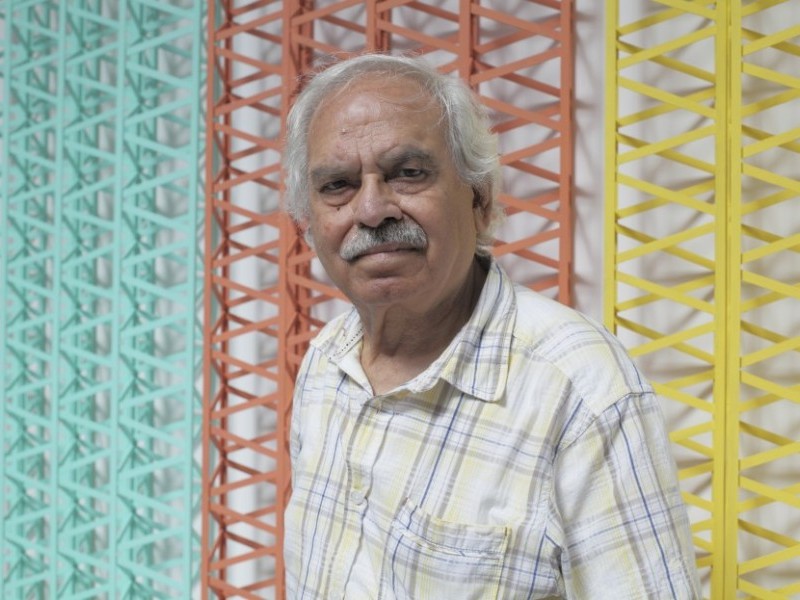Overview
Known for his formal geometric sculptures made from everyday materials, Rasheed Araeen is widely considered to be a pioneer of minimalism and post-colonial thought. With no formal training in sculpture, it was his work as a civil engineer and an early encounter with the sculptures of Anthony Caro that influenced the formal language and use of simple or industrial materials, which have become characteristic of the artist’s best-known works.
Unsettled Objects includes two sculptures in which, unlike Caro, Araeen tried to eliminate hierarchy and traditional notions of composition; steel girders were placed, without a plinth, in simple grids on the gallery floor. Sculpture No. 1 (version II) and Sculpture No. 2 were both created in 1965 and reproduced by Sharjah Art Foundation in 2014. Also included are Araeen's early paintings and drawings How Could One Paint a Self-Portrait (1978–79) and History Painting (1987–1994). The works are dictated by questions of identity and the stark reality of being what has oft been dubbed a ‘Third World’ immigrant and artist in Britain. During that period, Araeen’s art had become political, drawing attention to the way Black (Afro-Asian) artists were often ‘unseen’ within the Western visual culture.
Related Content

Unsettled Objects
Sharjah Art Foundation presents Unsettled Objects, featuring new acquisitions and rarely seen works from the Foundation's Collection; the artists and works on display explore art history’s hidden stories.

Araeen, Rasheed
Known for his formal geometric sculptures made from simple materials, Rasheed Araeen is widely considered to be an early pioneer of minimalism.
